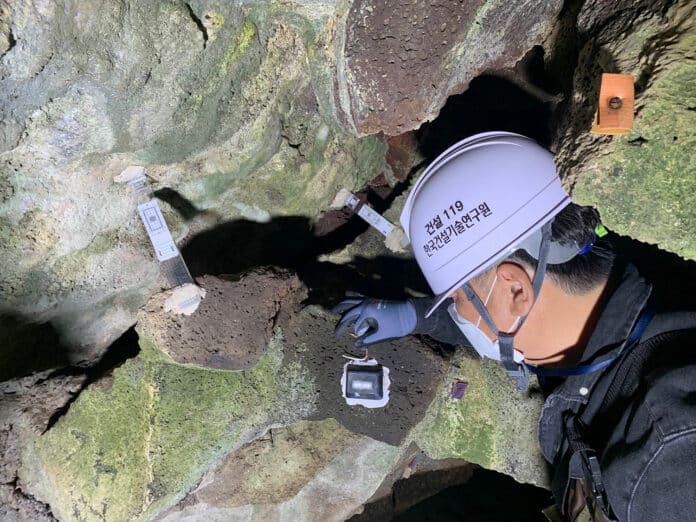The leading cause of death during earthquakes is the collapse of urban infrastructures and the subsequent delay of emergency responders in identifying and reaching the affected sites. Researchers are searching for a method of instant sensing the collapse of slopes or buildings caused by ground movement for immediate response.
The existing systems that measure the ground movement are not widely used because they are intended for use by experts and are costly and difficult to use.
Now, the Korea Institute of Civil Engineering and Building Technology (KICT, President Kim Byung-suk) has developed a smart sensor that detects signs of ground or structure collapses and a real-time remote monitoring system. The smart sensor turns on a LED warning light upon detecting ground movement.
The new sensors can be easily installed 1m-2m apart in areas susceptible to collapses. The sensors detect changes in slope as subtle as 0.03°. When signs of a collapse are sensed, they immediately turn on an LED light to give a warning.
Thanks to the highly efficient optical transmitting lens technology in the sensors, the LED alert is visible to the naked eye even at a distance of 100 meters day or night. When the warning light turns on, people in the situation room can remotely find out what is happening in the affected area in real-time. This ultimately helps them take additional measures, such as sharing the developments of the collapse with the appropriate authorities.
Smart sensors are much easier to install, and their cost of installation and operation is more than 50% lower than the existing sensors. In addition, thanks to their ultra-low power consumption, they can run for almost a year without battery replacement. The sensors endure and function well even at extreme temperatures of −30℃ to 80℃, making them useful in areas with distinct seasonal variations.
What’s more, an algorithm in the sensors analyzes and evaluates the risk based on the conditions of the monitored locations, preventing false alarms. The sensors can be used at sites of construction, public works, tunneling work, dilapidated buildings, and historic properties, as well as mines, underground structures, areas susceptible to landslides, and so forth.
“The current detection technology cannot respond very quickly to a collapse because it takes so much time to analyze and interpret the data. This new sensor technology will greatly reduce the time to take action and, therefore, do a great deal to help prevent and respond to collapses,” said Dr. Baek, Yong at the Department of Geotechnical Engineering Research at KICT.
